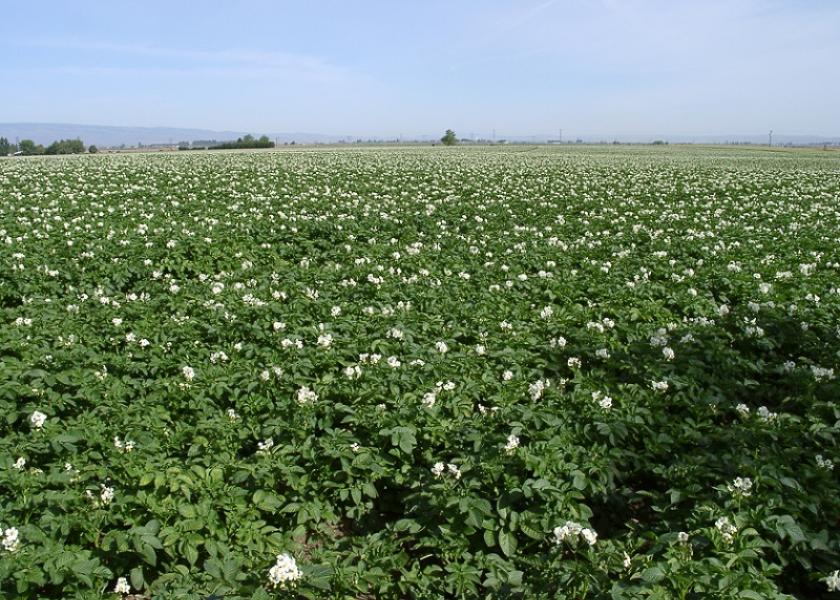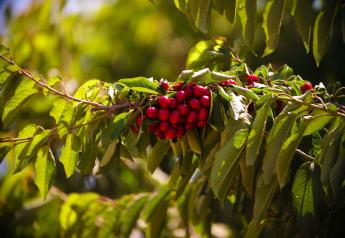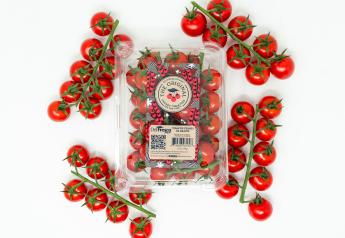Washington potato growers see strong market, but later start

After a year of strong fresh potato prices, Washington potato marketers are looking at a favorable new crop outlook and strong demand for both processing and fresh potato supplies.
Average shipping point prices for Washington potatoes were $16.55 per carton for the week of June 25, up 52% from $10.90 per carton the same week a year ago.
The 2022 crop outlook is favorable, said Chris Voigt, executive director of the Washington State Potato Commission, Moses Lake, Wash.
The official acreage report had not been issued as of late June, but Washington’s potato acreage is expected steady in a range from 165,000 to 170,000 acres, he said.
In mid-May, temperatures in the 80s during the days and cool nighttime temperatures were giving potatoes perfect growing weather. That is a big contrast from a year ago, when temperatures as high as 115 degrees stressed the crop.
This year has seen a wet spring and a later harvest start is expected.
“The potatoes didn’t start growing until recently,” Voigt said, noting that the crop in mid-May was about two weeks behind normal pace. “I don’t think that will have a huge impact for most of the crop, because most of what we grow, it's going to be harvested in October and put into storage and used for the rest of the year."
Early varieties could be particularly slowed by the later season, however.
“Generally, some of the potato processors like to start using new crop potatoes right around July 5, and that’s the crop that's going to be impacted the most, because there's not a lot of time between now and then to catch up,” Voigt said.
Even by July 15, early potato volume could be more limited than usual, he said.
As evidenced by increasing prices, Washington fresh potato grower-shippers were running out of potatoes in late May, as last year’s hot weather drove down yields about 10%, he said.
“We started the year a little short with potatoes, and fresh market (shippers) have been just kind of trying to meet the customer needs and really haven't been out there looking for customers,” he said.
Washington shippers are unlikely to have a gap between old crop and new crop potatoes, but Voigt said there has been an escalation in pricing to ration supply.
The new fresh potato crop typically begins about the third week of July, but this year Voigt said that timing could be closer to the end of July or early August.
Processors use about 90% or more of the Washington potato crop, he said, and that percentage continues to climb because of the demand for processed potato products.
A substantial portion of the crop is processed and shipped by containers to overseas markets in Asia, he said.
“You combine the highest yields in the world with the easier access to the Pacific Rim and you are going to attract a lot of processing,” he said. The ability to export potato products, compromised during the pandemic period and after, is improving but still far from perfect, Voigt said.
“I think last year about this time was the worst of it, but it is starting to slowly improve,” he said, noting that potato leaders were pleased with recent Congressional action on the Ocean Shipping Reform Act that is expected to help U.S. exports.
“I don’t think it is going to offer overnight relief, but it will be good for the long-term health of our shipping industry,” he said. “We’re still struggling to get our containers, but it is gradually improving, and prices are coming down both ways,” he said.
Rising input costs are felt by growers, Voigt said. Even though contracted processor prices increased about 20% last fall, the cost of inputs has increased even more, he said.
From February to the end of April, input prices for fertilizer and other inputs have skyrocketed, he said. Sometimes it is easier for fresh market potato shippers to recover those higher costs than for growers with set contract prices.
Variety breakdown
The USDA reported that Washington’s growers in 2020 planted 80% russet varieties, compared with 84% in 2019 and 2018. The percentage of yellow varieties planted in Washington state accounted for 4% of the planted acreage, up from 2% in 2019 and 2018. The percentage of red varieties planted in Washington state in 2020 accounted for 6% of the total, up from 4% in 2019 and 5% in 2018. The percentage of white potatoes planted in Washington state was 10% of the total in 2020, the same as 2019 and up from 9% in 2018.
Washington’s Skagit Valley is seeing a shift over time from red potato varieties to increased yellow-fleshed potato varieties, Voigt said.
“Even though they've got these amazing red potatoes, probably the best in the country, customers are now wanting less of those and more yellow potatoes,” Voigt said, noting that the percentage of reds and yellows grown in the Skagit Valley now are roughly 50-50.
The growth in consumer demand for yellow-flesh potatoes has growers increasing acreage to meet demand, he said.
Harvest outlook
Petite potatoes grown in eastern or central Washington will be harvested first in July, followed by red and yellow potatoes later in July, followed by the first of the russet norkotah harvest in late July or early August. Skagit Valley harvest will begin in September, Voigt said.
Despite the drought in the Western U.S., Voigt said the majority of Washington potato producers are sheltered from that by abundant irrigation water from the Columbia River.
Ninety-five percent of the water in the Columbia River, which originates in the Rocky Mountains in British Columbia, ends up in the ocean.
“Even with the drought, we have really good access to water; I don't think any of our producers are having drought impacts whatsoever,” he said.
Labor markets are tight, and Washington state’s overtime rules may create further hardships in coming years. Right now, growers must pay overtime for workers putting in more than 55 hours per week, but that will be lowered to 40 hours per week by 2024.
“Folks are looking for efficiencies everywhere that they can,” he said.
Voigt said agriculture industry leaders are looking to federal and state legislators for possible tax relief measures to deal with the challenges growers face with higher labor costs.







